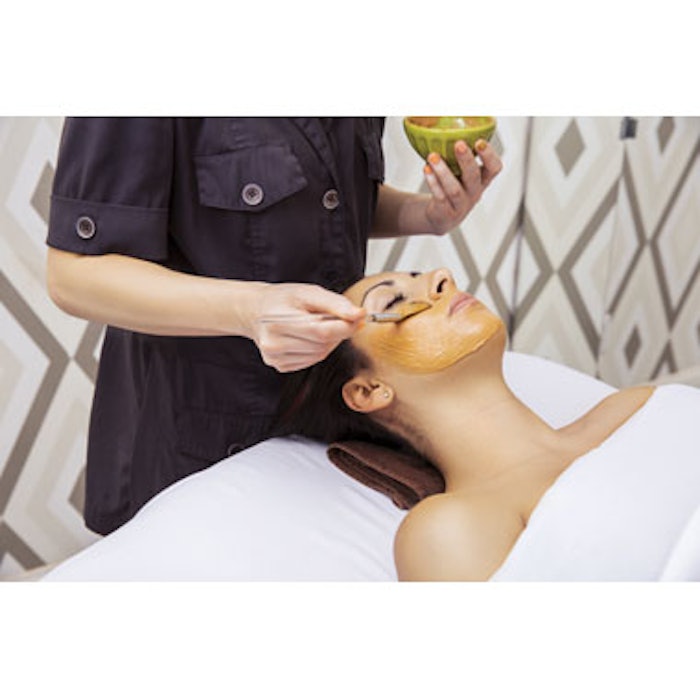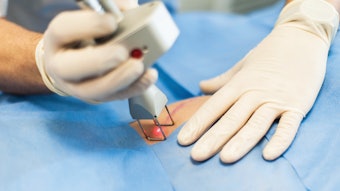
By Cheryl Whitman Beautiful Forever Consulting
In an effort to grow their market share, face down competition and offer patients the best outcomes, many cosmetic physicians expand their practices to include nonmedical esthetic services. Some opt to add an esthetic treatment room to an existing practice; others have built out an off-site, affiliated spa business. As we will see below, each option has benefits and drawbacks.
Esthetic Treatment Rooms
The most cost effective—and lowest risk—path to adding nonmedical esthetic services involves converting one of your treatment rooms into an esthetics room. You can hire an esthetician as an employee or bring in an independent contractor and rent the room to her. This strategy requires minimal investment. You’ll need:
- A tastefully decorated room that is comfortable
- A spa treatment table or multipurpose chair
- Equipment, such as steamers, microdermabrasion machines and IPLs, to facilitate the full range of esthetic treatments to be provided
- An esthetician brought on as either an employee or independent contractor
- A direct phone line or front desk staff that is trained to book these appointments
The biggest benefit of adding an esthetic treatment room is that it can be done with a relatively small outlay of cash; the downside is that a treatment room has a limited ability to attract new patients, outside of the practice’s existing network. Therefore, internal marketing—including email blasts, inside signage and open houses—is integral to growing the demand for these services.
Opening a Spa
Some physicians bypass the treatment room and launch an adjoining spa or medspa, operating as its own freestanding business. This can significantly drive patient referrals: Spa clients often become medical patients, and medical patients regularly seek out spa services. The downside is that these businesses typically have high overhead costs and smaller profit margins than medical practices, so the risk is greater.
Keep in mind that a medical practice and a spa are also two very different types of businesses. To realize the full scope of profits and benefits of each, they should be treated as separate and unique businesses from the outset. This includes setting up separate expense and revenue tracking.
Some physicians choose to overlap the businesses’ back-office functions—centralizing the call center and appointment booking, for example. This allows the two businesses to share some staff, but you will still need to hire additional employees. On top of the estheticians and other nonmedical service providers, such as massage therapists and nail technicians, you will need a spa manager to run the business day to day.
The manager should be in place at least two to three months ahead of the launch to help research the marketplace, develop the service menu and pricing, and hire staff.
Location is also a factor that requires careful consideration. Ideally, the spa will be located in a separate office space from the existing practice and feature a beautiful, relaxing atmosphere.
In some cases, doctors have launched spas next door to or in the same building as their medical offices. The ideal location will have easy access from major traffic arteries, adequate parking, good lighting at night and good security. An upscale shopping area with a lot of foot traffic is a good location choice, however such high-rent locations come with higher overhead costs. It is a factor that makes an in-practice esthetic treatment room more financially attractive to some practices.
Physicians that launch separate spa businesses must also consider branding. Ideally, the spa will have its own name and logo, though you can tie the two together under the physician’s name or through a similar graphic.
Image copyright Getty Images.
[pagebreak]
Are Esthetics Right for You?
Before you consider opening a spa or converting a treatment room to an esthetics room, survey your
patients to make sure there is adequate interest in these services. You can create your own survey—which can
be emailed to patients—online through www.constantcontact.com or www.surveymonkey.com. Ask your current patients
the following questions:
- Would you be interested in obtaining spa services from [practice name]?
- If so, which types of services would you like to see offered (facials, massage, chemical peels, manicures/pedicures)?
- Where do you currently go for these services?
- Would you take advantage of these services if they were offered through our practice, or would a different location be more attractive?
Getting Started
If patients respond enthusiastically to the idea of esthetic services, set the new venture up for success by creating a comprehensive business plan. This is necessary even if you’ve decided to start slowly and test the waters with a single esthetics room. The business plan should include the services you plan to offer, pricing, projected expenses (startup and recurring), projected revenue, operational protocols and marketing efforts.
This process helps practices avoid costly mistakes. When researching the data for your business plan, it can be beneficial to speak with other, noncompeting physicians who offer a similar business model and consultants who regularly work with medical aesthetic practices, spas and medspas to make sure you’re not missing any vital information.
For both new ventures, marketing efforts should begin two to three months ahead of the planned opening date. With proper planning, esthetic services can help physicians offer valuable pre-, post- and maintenance care to their patients, ensuring the best possible outcomes while supporting the practice’s bottom line.
Cheryl Whitman is the CEO of Beautiful Forever, a national aesthetic business consulting firm that helps physicians develop new profit centers for practice growth. Contact her at [email protected].
Image copyright Getty Images.











